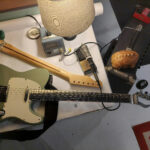Learning to play the electric guitar can feel like an overwhelming journey, especially when you’re starting out. Unlike aspiring guitarists from past decades who relied heavily on in-person lessons, you have a vast universe of resources at your fingertips. Online lessons, tablature sites, gear reviews, and vibrant online communities are all readily accessible.
While guidance from a skilled teacher is undoubtedly beneficial, learning electric guitar independently is absolutely achievable. All it takes is the right direction, a spark of inspiration, and consistent dedication to keep you progressing.
This guide will provide you with essential tips and strategies on how to effectively learn electric guitar by yourself, setting you on the path to musical enjoyment and skill development.
Gearing Up for Success: Essential Equipment
Choosing Your Electric Guitar
While dreaming of a vintage Gibson Les Paul might be tempting, starting your guitar journey with practical and reliable gear is crucial for smooth progress. Investing in a decent quality guitar that plays well and stays in tune will significantly impact your learning experience in numerous positive ways.
 Beginner electric guitar setup
Beginner electric guitar setup
Several brands are known for producing excellent beginner-friendly electric guitars. Fender Squier, Epiphone, and Yamaha Pacifica are consistently recommended for their quality and playability at entry-level price points. Remember that extremely cheap guitars, often found online for under $100, might compromise your learning experience due to poor sound and construction. Investing a bit more upfront will pay off in the long run.
The Power of Modeling Amps
Alongside your guitar, a functional amplifier and a reliable guitar cable are indispensable. Modern technology offers fantastic, affordable options in the form of modeling amplifiers. These amps are particularly advantageous for beginners as they digitally recreate the sounds of numerous classic and contemporary amplifiers.
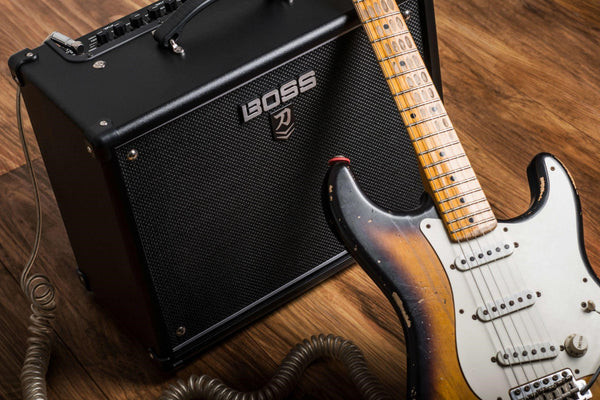 Modeling amplifier for electric guitar practice
Modeling amplifier for electric guitar practice
Modeling amps allow you to experiment with a wide palette of tones at a fraction of the cost of owning multiple amps. You can explore various sonic landscapes and later upgrade to a higher-end amplifier once you’ve discovered your preferred sound.
Essential Accessories: Picks, Straps, and More
Beyond the core gear, you’ll need guitar picks and a comfortable strap. Consider investing in strap locks to secure your guitar strap, preventing accidental drops, especially when you start moving around while playing.
Guitar picks are available in diverse shapes, sizes, and thicknesses. Experiment with a variety pack to find picks that feel comfortable and produce the sound you prefer. Thinner picks are generally more flexible, while thicker picks offer more control and a bolder tone.
Getting to Know Your Electric Guitar and Amp
Understanding your equipment is as important as practicing. Familiarize yourself with the manuals for your guitar and amplifier to grasp every function and feature. This knowledge empowers you to control your sound effectively and troubleshoot potential issues.
Dissecting Your Electric Guitar
Electric guitars share fundamental components: a body, neck, frets, strings, pickups, tuning pegs, nut, bridge, and control knobs and switches.
Take the time to understand the purpose of each knob and switch. These controls are your sonic sculpting tools, allowing you to shape your guitar’s tone.
For instance, a Stratocaster-style guitar typically features single-coil pickups, a five-way selector switch, and volume and tone knobs. Single-coil pickups, characterized by a single magnet wrapped in copper wire, produce a bright, clear, and articulate sound.
 Stratocaster style electric guitar pickups
Stratocaster style electric guitar pickups
In contrast, guitars like Les Pauls or SGs often utilize humbucker pickups. Humbuckers consist of two magnets combined, resulting in a thicker, warmer, and more powerful tone, ideal for rock and heavier genres.
Mastering Pickup Switching
The five-way switch on a Stratocaster allows you to select different pickup combinations. The position closest to the neck activates the neck pickup (warmer tone), while the position furthest from the neck engages the bridge pickup (brighter, sharper tone). The intermediate positions blend neck and middle or middle and bridge pickups, offering a variety of tonal colors.
On guitars with two humbuckers and a three-way switch, the positions typically select the neck pickup, both pickups together, or the bridge pickup. Toggle switch labels like “rhythm” and “treble” are sometimes used, but don’t limit yourself – experiment with both settings for rhythm and lead playing to discover what suits your style.
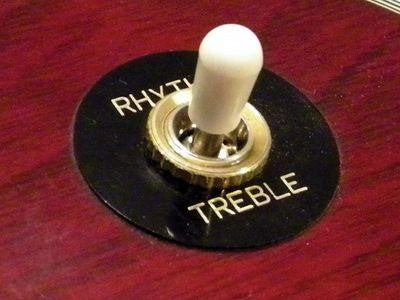 Electric guitar pickup selector switch positions
Electric guitar pickup selector switch positions
When using both pickups simultaneously, you can adjust the volume knobs to blend their sounds. For example, setting the neck pickup volume lower than the bridge pickup volume can create interesting tonal textures. Experimenting with these controls unlocks a world of sonic possibilities from your electric guitar.
Tuning and String Maintenance
Learning to tune your guitar is a fundamental skill at every stage of your guitar journey. Fortunately, numerous user-friendly smartphone apps are available for accurate and convenient tuning.
Clip-on tuners are also a great investment. They attach to your guitar’s headstock and provide quick and easy tuning, especially useful during practice sessions or performances. Pedal tuners, placed in your signal chain (typically first), are another option for silent and precise tuning, often preferred by gigging musicians.
 Clip-on tuner for electric guitar
Clip-on tuner for electric guitar
Understanding how to change your guitar strings is equally essential. Numerous online video tutorials offer step-by-step guidance. Explore different string gauges (thickness) and materials. Lighter gauge strings are easier on the fingers, especially for beginners, and facilitate bending. Heavier gauges offer a thicker tone and greater tuning stability, favored by some advanced players. Experiment with different string types to discover your personal preference.
Decoding Guitar Music: Tabs and Chords
Guitar tablature (tabs) and chord charts are your gateway to learning songs and understanding guitar music without needing to read traditional musical notation.
Guitar Tabs Explained
Guitar tabs are a simplified notation system specifically for guitar. They consist of six horizontal lines representing the six guitar strings. Tablature is read from bottom to top, with the lowest line representing the low E string (6th string) and the highest line representing the high E string (1st string).
Numbers placed on the lines indicate the fret to be played on that string. For example, a “1” on the top line signifies playing the first fret on the high E string.
Similarly, a “5” on the bottom line indicates playing the fifth fret on the low E string.
Chord Charts: Visualizing Chords
Chord charts are another user-friendly method for learning guitar. Many online resources provide chord charts that often include chord diagrams, visually illustrating how to play chords.
Chord diagrams represent the guitar fretboard as if you were looking down at it from the bridge towards the headstock. Vertical lines represent the strings, and horizontal lines indicate frets. Dots on the diagram show where to place your fingers to form a chord.
Here’s an example of a chord diagram for an E major chord in open position:
In this diagram, dots indicate placing fingers on the second fret of the A and D strings, and the first fret of the G string. Practice reading chord charts and diagrams to quickly learn chord shapes and learn songs efficiently.
Leveraging the Internet for Guitar Learning
The internet is an unparalleled resource for guitarists today. It’s truly a golden age for learning, offering access to a wealth of information and learning materials.
However, it’s crucial to discern quality resources from less reliable ones. Not all online content is accurate or effective. Consider investing in a structured online guitar course to ensure a well-organized and progressive learning experience. Following a structured program helps you track your progress and distinguish valuable information from misinformation. A disciplined learning plan is the most effective path to guitar development.
Choosing a Structured Learning Path
Resist the temptation to jump between random YouTube videos. While YouTube offers abundant content, it often lacks a structured curriculum. Avoid feeling overwhelmed by endless options. Select one comprehensive course and follow it diligently before exploring other topics.
guitarplayers.net offers excellent, step-by-step programs designed for guitarists of all levels. Our course, ‘Guitar Exercises for Beginners,’ provides a dual benefit: it guides you through learning electric guitar while establishing a strong practice routine to accelerate your progress.
The best part? You can significantly enhance your guitar skills with just 10 minutes of focused practice per day. Explore our beginner course here.
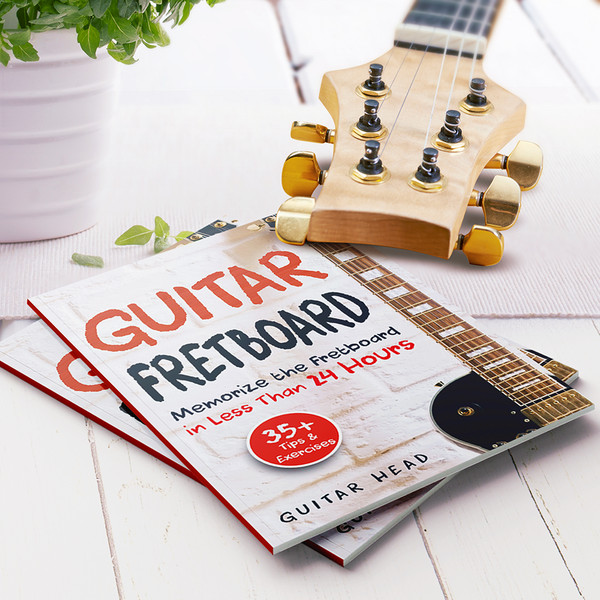 Guitar fretboard visualization for learning
Guitar fretboard visualization for learning
Setting Goals and Maintaining Focus
Learning independently requires self-motivation and discipline. Setting achievable short-term and long-term goals is crucial for staying focused and making consistent progress.
For example, aim to learn the five positions of the minor pentatonic scale within five months, dedicating approximately one month to each position. This type of goal is realistic and manageable without requiring excessive time or effort.
Establishing a Practice Routine
Develop a consistent practice routine and stick to it. Schedule a dedicated practice time each day and create a structured plan to maximize your practice sessions. Avoid aimless “noodling” for extended periods.
A sample practice routine could include warm-up exercises, scale practice, chord practice, and learning songs. Customize your routine to align with your goals. Consistency is the key to effective practice and progress.
The Power of Listening
Active listening is fundamental to becoming a proficient musician. Immerse yourself in music to develop an understanding of how the guitar should sound in the hands of skilled players.
Continuously seek out new music to keep your inspiration fueled and your musical horizons expanding. Stagnant listening habits can often lead to stagnation in your guitar playing.
Learning from Guitar Masters
Explore interviews with your favorite guitarists to gain insights into their musical approaches and philosophies. Delve into their thought processes and try to understand the elements that contribute to their unique sounds.
Attend live performances whenever possible to experience the dynamic energy and atmosphere of live music. Observing how musicians interact with their instruments and audiences in a live setting is invaluable.
Mastering the Essentials: Basic Guitar Skills
Regardless of your preferred musical genre, mastering fundamental skills is paramount. Learn basic open position chords, barre chords, and essential major, minor, and pentatonic scale patterns.
These are the building blocks of guitar technique, providing a solid foundation applicable to virtually any playing situation. Understanding basic chords and scales also enhances your communication with fellow musicians.
Chords in Every Key
Learning to play chords in all twelve keys is essential for versatility. The CAGED system is a valuable tool on guitar, enabling you to move chord shapes across the fretboard to play chords in different keys.
For example, the C shape barre chord, rooted on the third fret of the A string, forms a C major chord. By shifting this same shape up two frets, with the root now on the fifth fret of the A string, you create a D major chord. This movable system applies to all shapes within the CAGED system.
Scales for Soloing and Improvisation
Just as chords have movable shapes, so do major, minor, and pentatonic scales. Learning one pattern of the minor pentatonic scale allows you to play it in all twelve keys by simply moving the pattern along the fretboard to match the desired root note.
The same principle applies to major and minor scales. This “movability” significantly simplifies learning scales on guitar compared to instruments like the piano, where each key requires a different fingering pattern.
Developing Specific Guitar Techniques
Identify the signature techniques of your favorite guitarists and practice incorporating them into your own playing. Common guitar techniques include slides, bends, hammer-ons, pull-offs, legato phrasing, sweep picking, and tapping.
Explore different picking styles like alternate picking, hybrid picking, and fingerpicking. A vast array of guitar-specific techniques awaits exploration. Focus on techniques that resonate with your musical interests and dedicate time to mastering them.
Learning Songs: The Best Practice
As a beginner, learning a wide range of songs, riffs, licks, and solos is highly beneficial. This is the most effective way to internalize the language of the guitar fretboard.
Like any instrument, the guitar has characteristic playing styles and idioms. Learning these guitar-specific mannerisms early on helps you develop a natural and authentic playing style. These foundational elements then become building blocks for developing your own unique voice on the instrument.
The Metronome: Your Rhythm Trainer
Utilizing a metronome will dramatically improve your timing and rhythm. A metronome is an invaluable practice tool, and numerous effective ways to incorporate it into your routine exist.
Fortunately, many free metronome apps are available for smartphones.
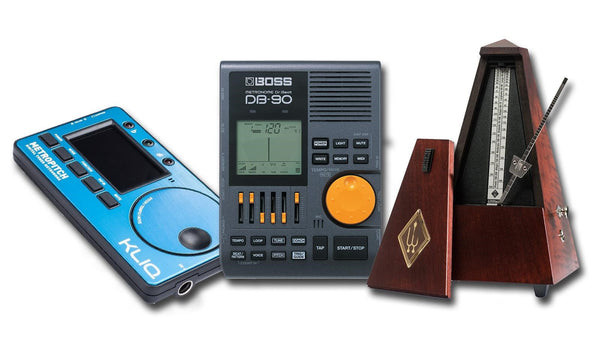 Metronome for guitar practice
Metronome for guitar practice
Metronome Practice Ideas
The most basic metronome practice involves playing in time with the clicks on all four beats of the bar. However, you can vary your practice by setting the metronome to click on only beats one and three, or even just on the off-beats (2 and 4), to challenge your internal sense of rhythm.
Think of metronome practice as rhythmic exercise. Consistent practice with a metronome will strengthen your timing and rhythmic precision.
Recording and Self-Assessment
Use a voice memo app on your phone to record your guitar practice sessions. Listen back critically to identify areas for improvement and acknowledge aspects of your playing that you are satisfied with.
Reflection for Growth
Listening to recordings of your playing is a powerful tool for self-reflection and skill development. Honest self-assessment while listening allows you to pinpoint weaknesses and accelerate your progress.
Embrace Music Theory
Music theory is simply a framework of concepts, tools, and terminology that musicians use to describe and understand musical patterns and structures. Don’t be intimidated by music theory.
Music Theory: A Helpful Tool
Many self-taught musicians mistakenly believe that music theory will stifle their creativity or make their playing too formulaic. In reality, the opposite is true.
Ignoring music theory limits your understanding of music and prevents you from accessing a vast realm of musical knowledge and expression. Music theory empowers you to understand why music works and how to create your own musical ideas more effectively.
Finding Your Guitar Community
Perhaps the most vital aspect of learning electric guitar independently is connecting with a community of guitarists and musicians.
Interacting with fellow musicians is the best way to stay inspired, discover new ideas, and broaden your musical horizons.
 Group of guitarists learning together
Group of guitarists learning together
Whether your community is online or local, engaging with other guitarists will accelerate your development and keep you motivated. Who knows, you might even find bandmates and start your musical journey together!
Consider Online Guitar Courses for Structured Learning
While learning electric guitar independently is entirely possible in today’s digital age, relying solely on unstructured resources like YouTube can be inefficient. YouTube lacks the structured progression and personalized guidance often needed for effective learning. You may find yourself jumping between videos without a clear path forward.
Investing in a quality online guitar course provides structure and a clear learning path, leading to faster progress and a more enjoyable learning experience.
Consider exploring our course, “Guitar Exercises for Beginners”. This comprehensive course features 7 chapters and over 100 exercises designed to take you from beginner to proficient guitarist. The unique aspect of this course is that it’s designed for effective learning with just 10 minutes of practice per day, maximizing your skill development even with limited time. Learn more about the course here.

